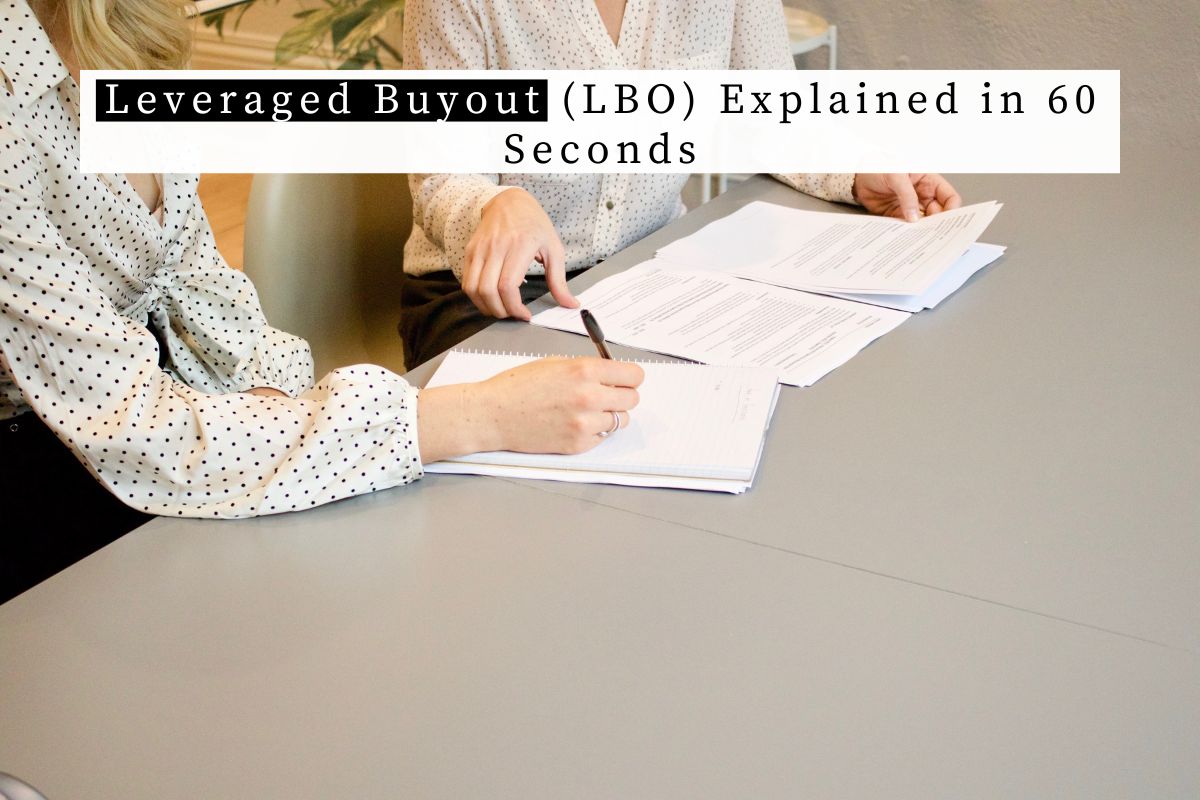As a prospective investment banker, it’s important to be well-versed in various financial concepts, including leveraged buyouts (LBOs). In this article, we’ll walk you through the ins and outs of LBOs.
Table of Contents
ToggleWhat is an LBO?
At its core, an LBO occurs when a private equity firm or group purchases a company using a significant amount of debt while only putting down a small amount of their equity. The goal of a successful LBO is to have the company pay off the debt over time, reducing the debt level and increasing the private equity firm’s equity amount in the company. This increases the private equity firm’s rate of return when they sell the company years down the line.
To illustrate this concept, consider the example of buying a house. Let’s say you wanted to buy a house for $500,000, but you only have $50,000 for a down payment. You borrow the remaining $450,000 from a bank, and then rent the property out. Over the span of ten years, you use the rent to pay down the debt. When you eventually sell the house, you no longer have any debt on it and can recover the entire $500,000. Initially, you only put down $50,000, so this represents a substantial rate of return.
Private equity firms follow a similar process, using a large amount of debt to buy companies, then paying off that debt using the company’s own cash flow. LBOs are important to investment bankers because many investment banking clients are private equity firms, particularly in the leveraged finance department of an investment bank. As a junior investment banker, it’s essential to know how to answer questions about private equity firms, how they finance their deals, and how they value companies.
How to Answer “Walk Me Through an LBO”
When asked to walk through an LBO in an interview, you should follow these six steps:
Step 1: Analyze the Purchase Price
The first step is to determine what price you can offer the owner of the company to close the deal. This can be done by looking at an exit multiple or a premium on top of the current share price.
Step 2: Allocate Capital
Next, you’ll need to allocate capital blocks to the purchase price, investment banker fees, and other costs associated with the transaction. You’ll also need to analyze how and where you’ll raise the necessary capital.
Step 3: Perform a Balance Sheet
Create a performer balance sheet of the company you’re looking to acquire. This will give you a better idea of whether the company can handle the new amount of debt and whether it has enough capital to pay off the debt.
Step 4: Create a Financial Model
Once you’ve created the performer balance sheet, you can begin creating the financial model. This will involve analyzing various financial statements and forecasting future cash flows.
Step 5: Perform LBO Analysis
With the financial model in place, you can now analyze the feasibility, profitability, and risk associated with the LBO. This includes looking at the internal rate of return and the multiple on investment.
Step 6: Run a Sensitivity Analysis
Finally, you’ll want to run a sensitivity analysis to see how changes in various assumptions and variables affect the feasibility of the LBO.
By following these six steps, you’ll be able to confidently answer the interview question “walk me through an LBO.” Whether you’re an analyst, associate, or intern, knowing how to answer questions about LBOs and private equity is essential for success in the investment banking industry.
Conclusion
In conclusion, understanding leveraged buyouts (LBOs) is a crucial skill for investment bankers, especially those working in the leveraged finance department. LBOs involve the use of a significant amount of debt to purchase a company, with the goal of paying off the debt over time and increasing the equity amount for the private equity firm. Knowing how to walk through an LBO is an important part of an investment banking interview, and involves analyzing the purchase price, allocating capital, performing a balance sheet, creating a financial model, performing LBO analysis, and running a sensitivity analysis. By mastering these steps, aspiring investment bankers can excel in their careers and help their clients navigate complex financial transactions.
FAQs
Q: What is an LBO?
A: An LBO (leveraged buyout) occurs when a private equity firm or group purchases a company using a significant amount of debt while only putting down a small amount of their equity. The goal of an LBO is to have the company pay off the debt over time, reducing the debt level and increasing the private equity firm’s equity amount in the company. This increases the private equity firm’s rate of return when they sell the company years down the line.
Q: Why is it important for investment bankers to know about LBOs?
A: Investment bankers work closely with private equity firms, particularly in the leveraged finance department of an investment bank. It is important for investment bankers to know about LBOs and private equity firms so they can advise their clients on how to finance their deals and value companies.
Q: How do you answer the interview question “Walk me through an LBO”?
A: To answer this question, you should follow these six steps:
- Analyze the purchase price
- Allocate capital
- Perform a balance sheet analysis
- Create a financial model
- Perform LBO analysis
- Run a sensitivity analysis
Additional Resources
To keep learning and advancing your career, we highly recommend these additional resources:
What is a Hedge Fund? A Complete Guide to Understanding Hedge Funds
Hedge Funds Explained in 60 Seconds












